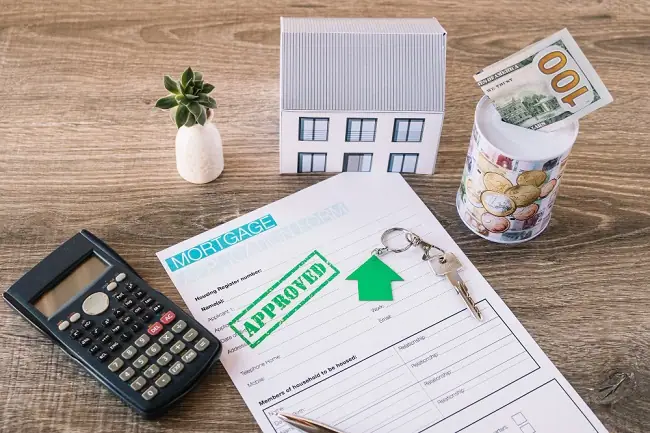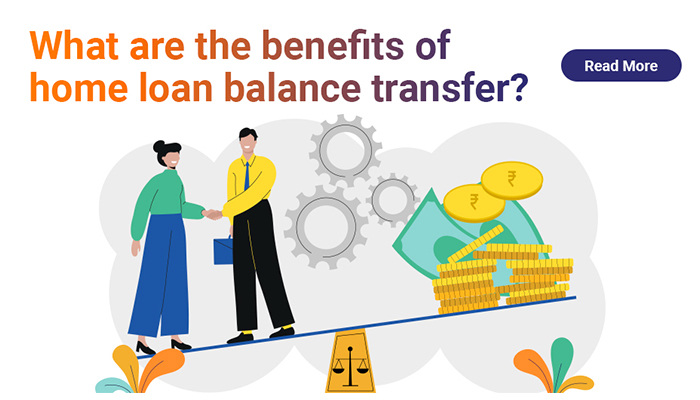Understanding Home Loan closing documents

Finalising a home loan is a momentous occasion, marking the conclusion of your journey towards homeownership. However, before you can fully celebrate, several important steps need your attention. Among these, understanding and managing your home loan closure documents is essential. These documents are not merely paperwork; they are the legal and financial bedrock upon which your home ownership rests.
Properly handling these documents and staying informed about your home loan interest rate ensures that your property is completely yours, free of any encumbrances and that your financial obligations are clear and transparent. Know the essential steps you must take to secure your home and financial standing after closing your home loan, including using a housing loan EMI calculator for better financial planning.
Collect Original Documents
Once you have repaid your home loan, you must submit an application for home loan closure. Here are the documents to collect after the home loan closure — sale deed, title deed, loan agreement, and any other property-related papers.
It is critical to ensure that these documents are returned in pristine condition, as they are essential for any future transactions related to your property. Losing or damaging these papers could lead to significant legal and financial complications. Therefore, take the time to verify that you have received every document you handed over to the lender, and keep them stored securely.
Obtain ‘No Dues’ Certificate
A ‘No Dues’ certificate is an official confirmation from your lender that your loan has been fully repaid and that there are no outstanding dues on your account. This certificate is a vital document, as it proves that you have cleared all your financial obligations related to the loan.
Without this certificate, the lender may still have a claim on your property, even if you have repaid the loan in full. Ensure that the certificate clearly states that the loan amount has been settled and that there are no pending dues. Keep this document safe, as it might be required in the future if any disputes arise regarding the loan.
Get Lien on Property removed
When you avail of a home loan, the lender places a lien on your property, which essentially means that they have a legal claim on the property until the loan is fully repaid. After repaying the loan and obtaining the ‘No Dues’ certificate, the next step in the home loan closure process is to have this lien removed.
To remove the lien, you need to approach the lender and request them to issue a lien release document. This document should then be submitted to the local sub-registrar office where the property is registered. The removal of the lien is crucial because it restores your complete ownership of the property, allowing you to sell or transfer it without any legal hindrances.
Obtain a ‘No Dues’ Certificate for Closure
The Non-Encumbrance Certificate (NEC) is a legal document that certifies that the property is free from any legal or financial liabilities. After you have cleared your home loan and removed the lien on the property, it is essential to obtain an updated NEC.

This certificate serves as evidence that the property is not encumbered by any debts or legal issues, making it clear and marketable. The process involves applying for the NEC at the local sub-registrar office. An updated NEC is particularly important if you plan to sell the property or if you need to apply for another loan in the future, as it assures potential buyers or lenders of the property’s clean title.
Ensure your Credit records
The final step in the home loan closure procedure is to ensure that your credit records reflect the closure of your loan. Once you have repaid the loan and received all the necessary documents from your lender, you should check your credit report to ensure that the loan is marked as ‘closed’ and that there are no outstanding dues recorded.
An accurate credit report is essential for maintaining a good credit score, which will be beneficial if you plan to apply for another loan or credit card in the future. If you notice any discrepancies, immediately contact your lender and request them to update the information with the credit bureaus. Timely correction of any errors will safeguard your creditworthiness and prevent any future financial complications.
Wrapping up
Navigating the home loan closure procedure may seem daunting, but with careful attention to detail, you can ensure that you have all the required documents after the closure of the home loan. You also ensure that your property ownership is secure, and your financial records are in order. From collecting your original documents to ensuring your credit report is updated, each step is crucial in safeguarding your investment. By following these steps, you not only protect your property but also lay the groundwork for future financial stability.

If you’re considering a home loan or need expert advice on managing your home loan closure charges, reach out to IIFL Home Loans for professional guidance and competitive rates. With the right support, you can make informed decisions and secure your dream home with confidence.
FAQs
Q1. What is a ‘No Dues’ Certificate, and why is it important?
A ‘No Dues’ Certificate is an official document from your lender stating that your loan has been fully repaid and that there are no outstanding dues. It is crucial as it serves as proof that you have cleared all financial obligations related to the loan.
Q2. How do I get the lien on my property removed after repaying the home loan?
You need to request a lien release document from your lender and submit it to the local sub-registrar office where your property is registered. This step is essential to restore full ownership of your property.
Q3. Why do I need an updated Non-Encumbrance Certificate (NEC) after closing my home loan?
An updated NEC certifies that your property is free from any legal or financial liabilities, ensuring that it is clear and marketable. This is particularly important if you plan to sell the property or apply for another loan in the future.
Q4. What should I do if my credit report does not show that my home loan is closed?
Immediately contact your lender and request them to update your loan status with the credit bureaus. Ensuring your credit report accurately reflects the closure of your loan is important for maintaining a good credit score.
Q5. Can I sell my property immediately after closing my home loan?
Once the lien is removed and you have all the necessary documents, including the updated NEC, you can sell your property without any legal hindrances.
Tags
Disclaimer: The information contained in this post is for general information purposes only. IIFL Home Finance Limited (including its associates and affiliates) ("the Company") assumes no liability or responsibility for any errors or omissions in the contents of this post and under no circumstances shall the Company be liable for any damage, loss, injury or disappointment, etc. suffered by any reader. All information in this post is provided "as is", with no guarantee of completeness, accuracy, timeliness, or of the results, etc. obtained from the use of this information, and without warranty of any kind, express or implied, including, but not limited to warranties of performance, merchantability, and fitness for a particular purpose. Given the changing nature of laws, rules, and regulations, there may be delays, omissions, or inaccuracies in the information contained in this post. The information on this post is provided with the understanding that the Company is not herein engaged in rendering legal, accounting, tax, or other professional advice and services. As such, it should not be used as a substitute for consultation with professional accounting, tax, legal or other competent advisers. This post may contain views and opinions which are those of the authors and do not necessarily reflect the official policy or position of any other agency or organization. This post may also contain links to external websites that are not provided or maintained by or in any way affiliated with the Company and the Company does not guarantee the accuracy, relevance, timeliness, or completeness of any information on these external websites. Any/ all (Home/ Loan Against Property/ Secured Business Loan/ Balance Transfer/ Home Improvement Loan/ NRI Home Loan/ Home Loan for Uniformed Services) loan product specifications and information that may be stated in this post are subject to change from time to time, readers are advised to reach out to the Company for current specifications of the said (Home/ Loan Against Property/ Secured Business Loan/ Balance Transfer/ Home Improvement Loan/ NRI Home Loan/ Home Loan for Uniformed Services) loan.
 Login
Login






















